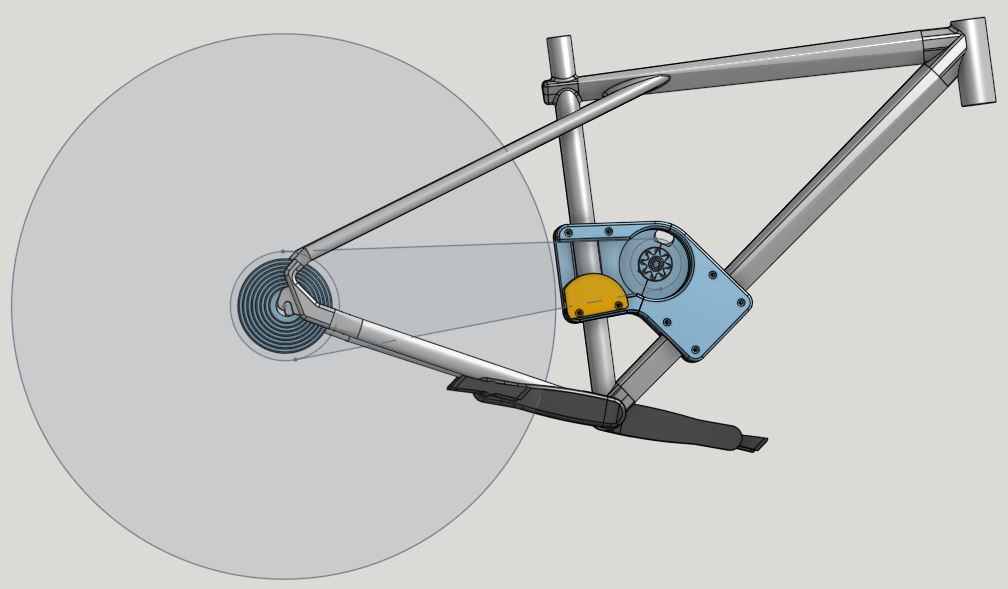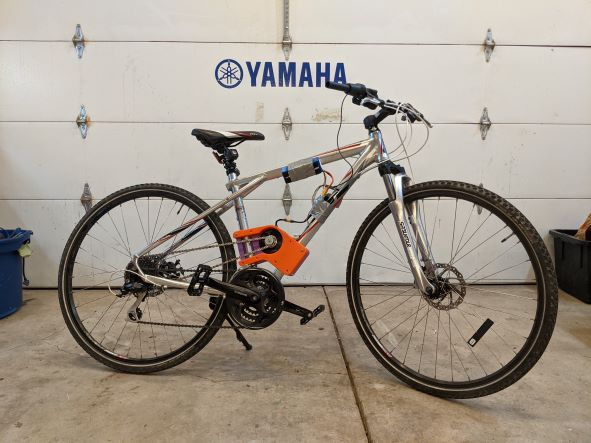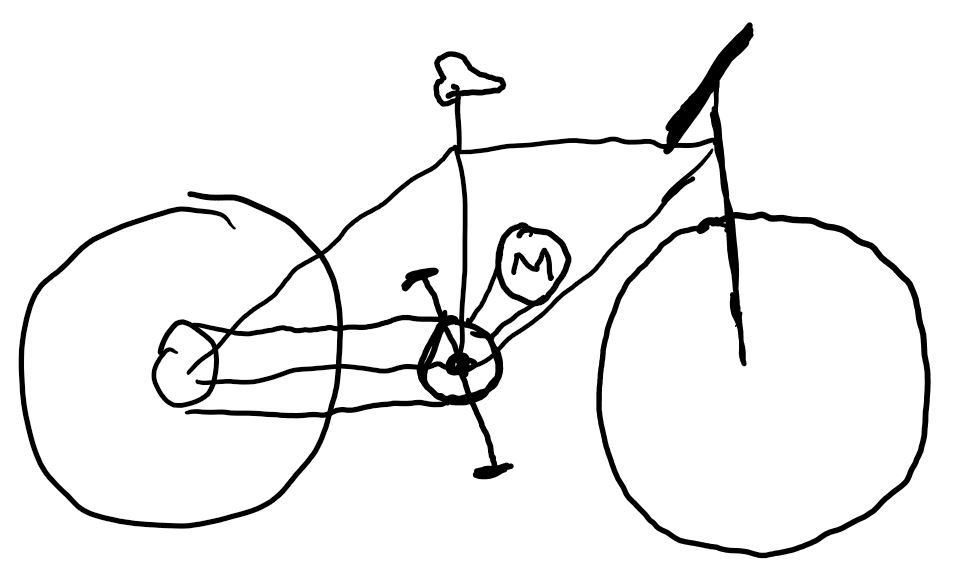Intro and Computer Aided Design
I really like biking, and I really like electric vehicles, so why not combine both interests?
For my final project, I’d like to build an e-bike. Pedaling around is fun, but what about days when I don’t want to pedal or don’t feel well? An e-bike would let me zip comfortably down the bike lane without much pedaling effort. Plus, with the system off, I can ride the bike like a normal bike. That’d be pretty sweet!
The e-bike would be powered by a brushless motor spinning the crank, then driving the rear wheel via the main chain. The motor would be controlled by a throttle, letting the rider control the level of assistance from zero to full-electric. It’d be mounted in the frame of the bike and chain-driven to the crank. This arrangement lets the rider pedal the bike like normal (zero assist), partial assist, or full assist, while preserving the ability to shift gears for hill riding.
The project would involve capturing the bicycle in computer-aided drafting (CAD) software, using measurements and 3D-scanning. The bicycle would have to be modified with an extra sprocket on the crank, opposite the cassette. Then, parts like the motor mount and battery holder would be designed specifically for this bike, then 3D-printed. I would also design and layout a PCB to do auxiliary control (lights, throttle mapping, etc.)
I’ve attempted this project previously, trying to drive the rear sprocket instead of the crank. That project didn’t work out well because I was using multi-speed bicycle chain, which will jump off one sprocket onto the next one if not perfectly aligned (that’s how bicycle shifting works). This time around, I’ll try on a different bike, drive the crank thru a dedicated sprocket instead of the 8-speed cassette on the rear of the bike, and use a more suitable chain.
Here’s a CAD screenshot of the old project, as well as the bike itself. A friend of mine helped me tremendously with the CAD.


Here’s a few sketches of what the new topology would look like.

